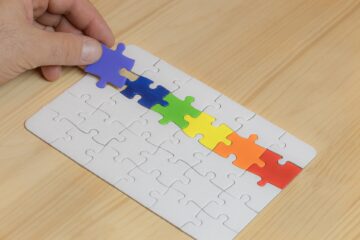![]()
“Educate one man, you educate one person, but educate a woman and you educate a whole civilization.”
Mahatma Gandhi
Introduction:
Inequality in access to education is one of the most important leading problems in the world. Education is the key to the development and success of any nation. In the world, everyone should get equal access to education. Many reasons are responsible for the inequality in access to education. From history, countries in the world did develop only due to knowledge and technology. Many people faced and continue to face inequality in various fields.
For the progress of human beings, it is necessary to give equality in access to education. There are many common problems responsible for the inequality in access to education. In the past social class were the main criteria to decide for any work. Low-level occupation was assigned on the bases of the class system and cast system (in India) and if they wanted to progress it was very difficult for them to acquire social mobility within the system.
People from lower classes were not allowed to access education. In many countries, people discriminated by color for example black colored people were denied to access education. Now in the present day, people are changing their mindset; modern times come with modern problems. So, it is very necessary to deal with it in modern ways. In some way, the same problems are carried forward from the past but now modern problems are more difficult to deal with. Problems change from country to country but still, there are some common problems. Social class, gender, color discrimination, poor government school, etc.
In the case of India due to high fees, many children can’t afford the education so they directly start working as soon as they become capable of working. India has the past of patriotic oriented society. So, in the family people think that educating boys preferably more important than the girls. The government school condition is very horrifying. The government of every country should be addressing these problems and at the global level should make some policies for access to equality in the education and insured that these policies are implemented correctly.
Global Scenario
The problems related to the inequality in access to education changes from country to country. As per the report of UNICEF, literacy is increasing in youth but still, in many countries, women and children lag[1]. The literacy ratio in many countries is very low. Literacy empowers people to improve livelihood, progress in development, and live in a better environment, etc. Literacy is helpful for improved child and family health and nutrition, reduced poverty, and expands future life opportunities to live a better life. At least 750 million youth and adults still cannot read and write and 250 million children are failing to acquire basic literacy skills.[2] This shows the Inequality to access to education affects literacy in every country.
Every child should have equal opportunities and access to quality education in the world. But even in rich countries, children are not getting an education so we can imagine the situation of poor countries to access education. When we consider the poor economy of any country because of that some countries have issues of daily food. So, it’s very hard to access education in these countries. Social class, economic status, government poor implementation of policies, bad condition of government schools, racism, etc. are some common problems in every country at the global level.
Equality is not the only thing that matters but the quality of education also matters. We can see this from the disparity or lack of skills in students who go to private schools versus those who go to the government school. Some poor countries are doing very well as compared to rich countries. Like, Latvia, Estonia, and Croatia do better than some of the wealthier countries (UNICEF) such as the UK, the US, or Sweden.[3] The report (UNICEF) also shows that girls consistently do better than boys. In many countries, people believe that girls should not take education and consider a woman after the man in society. We can see this thing happened in many patriotic countries.
Migrant children do less well than non-migrant children in most countries because of migration many children are migrating from one palace to another for the government should start a wheel school concept. Although in Australia and Canada, second-generation immigrant children outperform non-migrant children. Family background is also shown to be a key driver of attainment and inequalities. The children from rich families have the privilege of the facilities that poor children cannot afford. Children from lower social class backgrounds lag as compared to their peers from richer, higher social class backgrounds from preschool onwards.
Indian Scenario
India is the second populated country in the world. The population itself is a problem if the government is unable to execute polices for equal access to education. Social class, higher fees of private schools and colleges, economic backwardness, non-facilities government schools; gender, etc. are the obstacles to equality to access education. Even though the government has affirmative action and reservation it is majorly flawed where poor people do not benefit or are the main beneficiaries of the scheme. It is so unusual for someone from a poor family to get through the JEE and NEET exams that when they do, it makes headlines. It directly shows the privilege of a rich student over the poor ones. The government should work on it to get equal opportunities and equality to access education to every child and rethink the implementation of these schemes.
Landmark Case: Unni Krishnan, J.P. & Ors. v. State of Andhra Pradesh & Ors.[4]
The Supreme Court held that the right to basic education is implied by the fundamental right to life (Article 21) when reading in conjunction with the directive principle on education (Article 41)[5]. This is the landmark case for the right to education in India. India has The Right of Children to Free and Compulsory Education Act the act describes the modalities of the importance of free and compulsory education for children between the ages of 6 to 14 years in India under Article 21A of the Indian Constitution. India became one of 135 countries to make education a fundamental right of every child when the act came into force on 1 April 2010.[6]
Conclusion
This problem of inequality to access education can be seen all over the world. In the case of India due to various reasons, children are facing problems accessing education. The equality to access quality education matters because the hidden talent in the low socio-economic section children cannot come out without education. We can see many past scholars are from a poor family but if they didn’t get the opportunity for education maybe we might not have known them. In India, the implementation of the right to education act should be done properly. Every child should get equal opportunities and equality to access education. For that government can invest money in the sector of education. The quality of education in government schools should be similar to the private schools and bring some new policies for the educational sector. At the global level, UNICEF is doing great work but still, they have to come up with some new policies and to get children equality in access to quality education.
References:
[1] Literacy Rates. (2020, May 14). Retrieved June 2, 2020, from https://data.unicef.org/topic/education/literacy/
[2] Literacy. (2018, March 19). Retrieved June 2, 2020, from https://en.unesco.org/themes/literacy
[3] Education inequality remains prevalent in the world’s richest countries. (2018, October 31). Retrieved June 2, 2020, from https://www.weforum.org/agenda/2018/10/inequality-of-education-in-the-uk-among-highest-of-rich-nations#:%7E:text=Research%20shows%20that%20in%20countries,education%2C%20fewer%20children%20overall%20attend.&text=Educational%20inequalities%20are%20also%20worse,and%20poor%20children%20in%20schools.
[4] 1993 AIR 217
[5] Constitutional Provisions. (n.d.). Retrieved June 2, 2020, from https://web.archive.org/web/20100201181216/http://www.education.nic.in/constitutional.asp
[6] India joins list of 135 countries in making education a right. (2016, November 11). Retrieved June 2, 2020, from https://www.thehindu.com/news/national/India-joins-list-of-135-countries-in-making-education-a-right/article13666115.ece



0 Comments